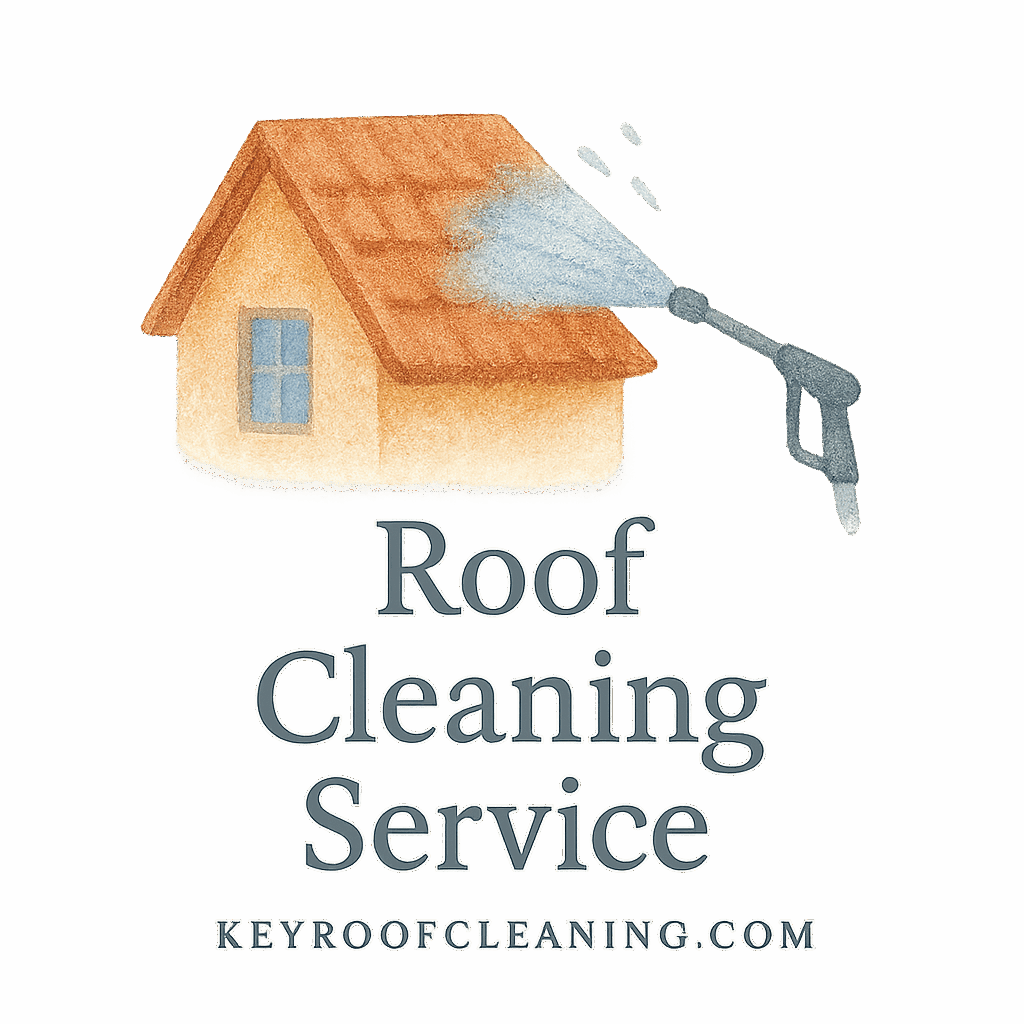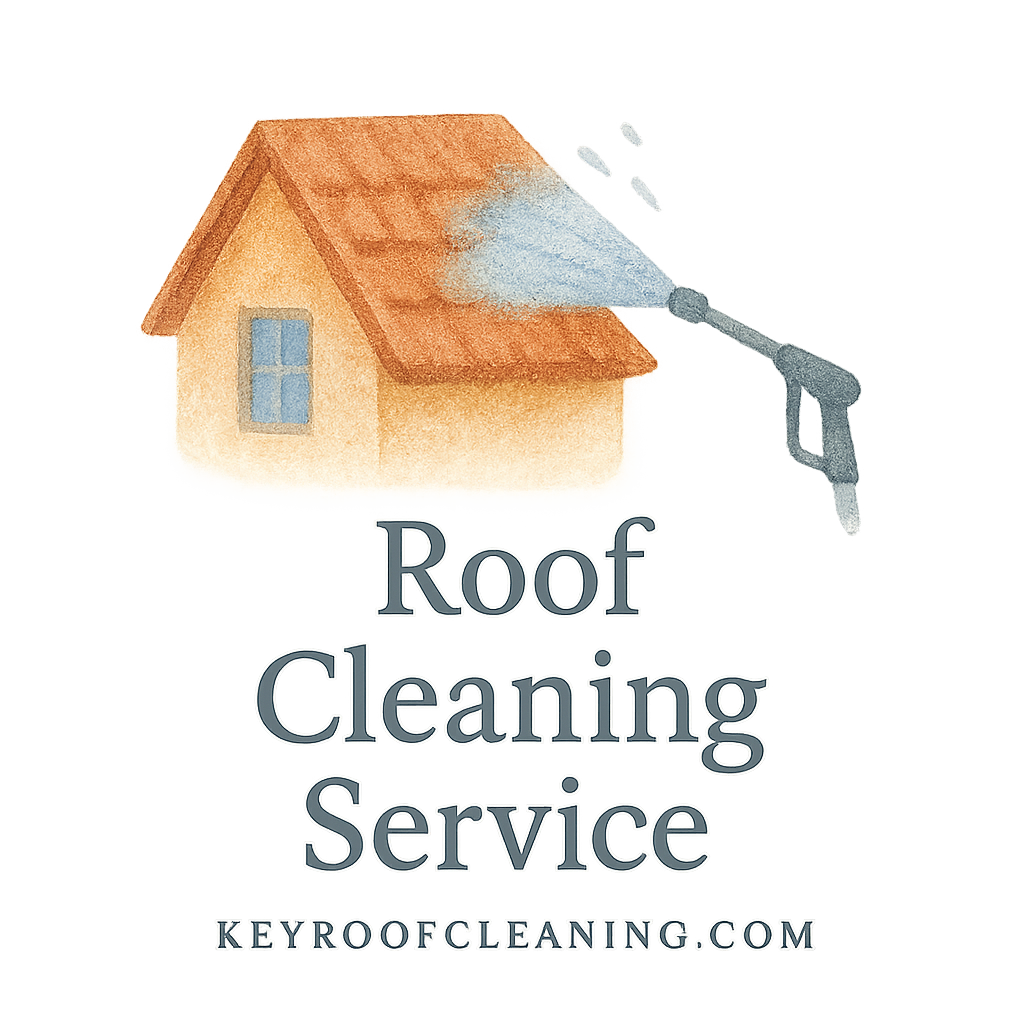So, your roof is finally clean—no more moss, no black streaks, and your home looks brand new. But don’t put away the ladder just yet! What comes after roof cleaning is just as crucial as the cleaning itself. In this guide, we’ll walk through 7 post-cleaning steps after roof cleaning services to keep your roof in top shape for years.
Why Post-Cleaning Care Matters
Cleaning your roof isn’t just about making it look good. It’s also a chance to prevent damage, extend the life of your roof, and keep future maintenance costs low. Skipping post-cleaning steps could mean missing early signs of wear or causing drainage issues that lead to costly repairs.
👉 Want to learn more about the basics? Check out this guide on the basics of roof cleaning.
Step 1: Conduct a Final Roof Inspection
Once the cleaning crew has wrapped up, it’s time for your own quick inspection.
Look for Missed Spots or Debris
Even professional services can miss a patch here or there. Scan for leftover moss, algae, or debris hiding in the corners.
Check for Damage or Loose Shingles
Cleaning sometimes reveals hidden damage—like cracked tiles or loosened shingles. These should be fixed immediately to prevent water infiltration.
Explore more about fragile surfaces in this resource on delicate roof types.
Assess Drainage and Downspouts
Make sure water flows easily off the roof and through the downspouts. Improper drainage can lead to pooling, mold, or even foundation damage.
Step 2: Clear Gutters and Downspouts
You’d be surprised how much gunk ends up in the gutters after roof cleaning.
Prevent Future Blockages
Clogged gutters aren’t just an eyesore—they can cause water to back up under your shingles. Clean them out now to avoid problems later.
Discover more in our gutter maintenance safety guide.
Safety Tips for Gutter Cleaning
Wear gloves, use a stable ladder, and consider a gutter scoop or hose attachment to make the job easier and safer.
For more tips, check out our ladder safety tips.
Step 3: Apply a Roof Protectant
Think of it like sunscreen for your shingles.
Benefits of a Protective Coating
Applying a protectant helps block UV rays, repel water, and extend your roof’s lifespan. It’s especially helpful in sunny or rainy climates.
Explore roof cleaning techniques that work well with protectants.
Eco-Friendly Options Available
Going green? Try biodegradable and eco-friendly protectants that are safe for your plants, pets, and the environment. Read more about our eco-friendly practices.

Step 4: Schedule Routine Maintenance
Don’t wait for stains to show up again—get ahead of it.
Set a Maintenance Calendar
Every 6–12 months, do a mini-checkup: look for moss growth, water damage, and debris. A simple reminder on your phone could save you hundreds in repairs.
Need help planning? Visit our maintenance and safety checklist.
Tools You’ll Need for Maintenance
Stock up on basic tools like a leaf blower, roof rake, and hose attachment. We recommend some great tools and products on our site.
Step 5: Take Safety Measures for Future Cleanings
Cleaning your roof is risky business, and safety shouldn’t be a one-time thing.
Ladder Safety and OSHA Standards
If you’re a DIYer, make sure your setup follows OSHA safety regulations. Use ladder stabilizers and never clean alone.
Checklist for Roof Safety
Check the weather, wear shoes with grip, and have a buddy system. For full peace of mind, here’s our go-to accident prevention checklist.
Step 6: Document the Cleaning Job
You’ll thank yourself later when you can look back at your records.
Before and After Photos
Photos help track wear and tear over time. They’re also handy for insurance claims and when hiring pros.
Maintenance Logs
Keep a log of what was done, who did it, and when. This makes future maintenance a breeze and shows responsibility if you ever sell the house.
Check out other helpful roof cleaning solutions.
Step 7: Hire Professional Inspectors Annually
One last step—but it’s a big one.
When to Bring in the Pros
Even if your roof looks great, a professional can spot problems you’d never notice. They’ll catch mold under shingles or structural damage before it becomes serious.
For expert tips, visit our section on hiring tips.
What Inspectors Typically Check
They’ll look at your roof’s structural integrity, check flashing and joints, and assess insulation and ventilation. It’s a small investment with a big return.
Find out about professional services in your area.
Final Thoughts on Post-Cleaning Steps
Roof cleaning is a major win for your home’s health and curb appeal—but the real magic happens afterward. By following these 7 post-cleaning steps after roof cleaning services, you’re not just maintaining your roof—you’re future-proofing your entire home. Prevention is cheaper than repair, always.
Ready to dive deeper? Explore more expert-backed content on the Key Roof Cleaning blog.
FAQs
1. How often should I inspect my roof after cleaning?
Ideally, do a visual inspection every 6 months and hire a professional annually.
2. Is applying a protectant necessary after roof cleaning?
It’s optional but highly recommended to extend your roof’s lifespan and resist UV and moisture damage.
3. Can I clean the gutters myself safely?
Yes, with the right tools and by following ladder safety tips.
4. What are the best tools for roof maintenance?
A roof rake, garden hose, leaf blower, and non-slip shoes are basics. Check out our recommended products.
5. Are eco-friendly protectants effective?
Absolutely! Biodegradable options are safer for your home and planet. See our eco-friendly tag section.
6. Should I worry about moss returning after a cleaning?
If you skip maintenance, yes. Regular upkeep and protectants help prevent it.
7. Where can I learn more about roof types and how they affect cleaning?
Head to our roof types and materials guide for detailed info.


